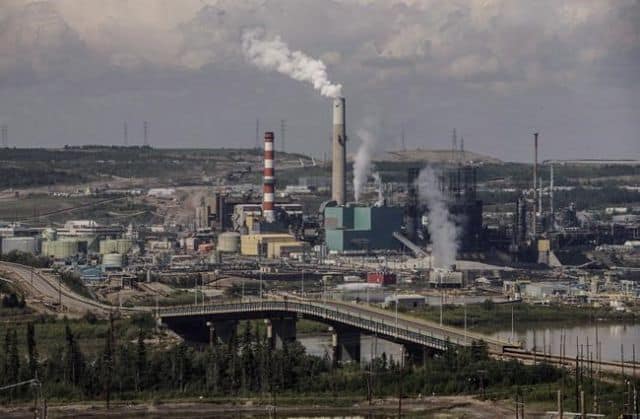
Canada’s price on carbon will have to be five times what it is now if the country is to reach its Paris Agreement greenhouse-gas emissions targets just by charging for those emissions, Parliament’s budget watchdog says.
The $20-a-tonne federal levy on fuels is set to rise to $50 a tonne by 2022. It applies in provinces that don’t have equivalent carbon-pricing systems of their own. The Parliamentary Budget Office says it won’t be enough.
In a new report Thursday, the PBO says an additional levy that goes beyond fuels would have to start at $6 per tonne of emissions in 2023 and rise to $52 by 2030.
Combined with the current federal fuel charge, that would add up to $102 per tonne. The PBO estimates that would mean an additional cost of 23 cents for a litre of gasoline.
The analysis assumes that pricing carbon is the only thing Canada would change about its climate-change policies. It also assumes this new tax would be broadly applied across all sectors, except agriculture, and in all provinces and territories.
Under the Paris Agreement, Canada committed to reducing its emissions by 30 per cent from their 2005 levels, which works out to a target of 513 megatonnes of carbon-dioxide equivalents in emissions in 2030.
The PBO cites government estimates that Canada will reduce its emissions from 704 megatonnes in 2016 to 592 megatonnes by 2030 under its current policies — leaving a gap of 79 megatonnes.
The PBO report relies on projections that include already-announced federal government programs as well as the impact of land-use changes and forestry. They include the impact of Ontario’s cancelling its cap-and-trade system for reducing emissions, but not the scrapping of Alberta’s existing provincial carbon tax as of the end of May.
The analysis also notes some spending on clean technology and public transit had not yet been modelled and were not included in Environment and Climate Change Canada estimates in 2018, which the report uses as its starting point.
The report provides estimates on several alternative scenarios. With fast GDP growth and high oil prices prompting more production in the western oilsands, the gap in emissions from the Paris targets nearly doubles, while a case of slow GDP growth and low oil prices would result in an outcome similar to the PBO’s baseline case.


